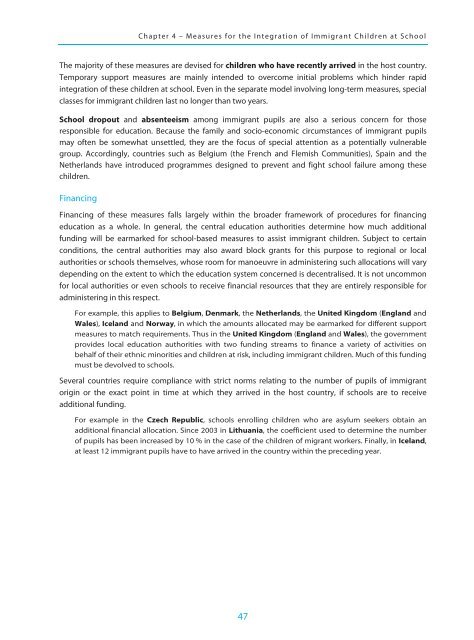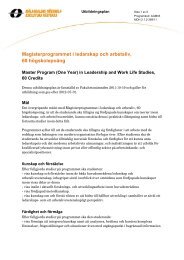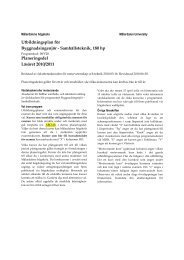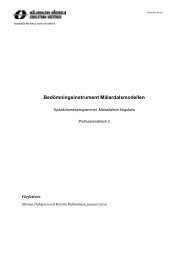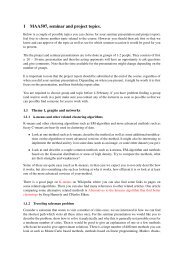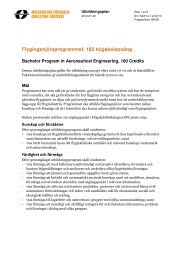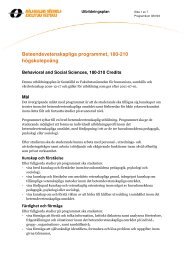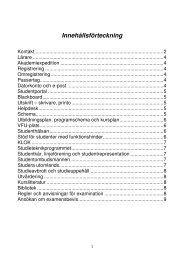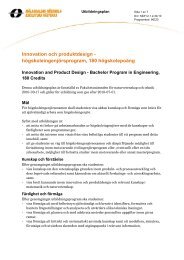Integrating Immigrant Children into Schools in Europe
Integrating Immigrant Children into Schools in Europe
Integrating Immigrant Children into Schools in Europe
Create successful ePaper yourself
Turn your PDF publications into a flip-book with our unique Google optimized e-Paper software.
Chapter 4 – Measures for the Integration of <strong>Immigrant</strong> <strong>Children</strong> at SchoolThe majority of these measures are devised for children who have recently arrived <strong>in</strong> the host country.Temporary support measures are ma<strong>in</strong>ly <strong>in</strong>tended to overcome <strong>in</strong>itial problems which h<strong>in</strong>der rapid<strong>in</strong>tegration of these children at school. Even <strong>in</strong> the separate model <strong>in</strong>volv<strong>in</strong>g long-term measures, specialclasses for immigrant children last no longer than two years.School dropout and absenteeism among immigrant pupils are also a serious concern for thoseresponsible for education. Because the family and socio-economic circumstances of immigrant pupilsmay often be somewhat unsettled, they are the focus of special attention as a potentially vulnerablegroup. Accord<strong>in</strong>gly, countries such as Belgium (the French and Flemish Communities), Spa<strong>in</strong> and theNetherlands have <strong>in</strong>troduced programmes designed to prevent and fight school failure among thesechildren.F<strong>in</strong>anc<strong>in</strong>gF<strong>in</strong>anc<strong>in</strong>g of these measures falls largely with<strong>in</strong> the broader framework of procedures for f<strong>in</strong>anc<strong>in</strong>geducation as a whole. In general, the central education authorities determ<strong>in</strong>e how much additionalfund<strong>in</strong>g will be earmarked for school-based measures to assist immigrant children. Subject to certa<strong>in</strong>conditions, the central authorities may also award block grants for this purpose to regional or localauthorities or schools themselves, whose room for manoeuvre <strong>in</strong> adm<strong>in</strong>ister<strong>in</strong>g such allocations will varydepend<strong>in</strong>g on the extent to which the education system concerned is decentralised. It is not uncommonfor local authorities or even schools to receive f<strong>in</strong>ancial resources that they are entirely responsible foradm<strong>in</strong>ister<strong>in</strong>g <strong>in</strong> this respect.For example, this applies to Belgium, Denmark, the Netherlands, the United K<strong>in</strong>gdom (England andWales), Iceland and Norway, <strong>in</strong> which the amounts allocated may be earmarked for different supportmeasures to match requirements. Thus <strong>in</strong> the United K<strong>in</strong>gdom (England and Wales), the governmentprovides local education authorities with two fund<strong>in</strong>g streams to f<strong>in</strong>ance a variety of activities onbehalf of their ethnic m<strong>in</strong>orities and children at risk, <strong>in</strong>clud<strong>in</strong>g immigrant children. Much of this fund<strong>in</strong>gmust be devolved to schools.Several countries require compliance with strict norms relat<strong>in</strong>g to the number of pupils of immigrantorig<strong>in</strong> or the exact po<strong>in</strong>t <strong>in</strong> time at which they arrived <strong>in</strong> the host country, if schools are to receiveadditional fund<strong>in</strong>g.For example <strong>in</strong> the Czech Republic, schools enroll<strong>in</strong>g children who are asylum seekers obta<strong>in</strong> anadditional f<strong>in</strong>ancial allocation. S<strong>in</strong>ce 2003 <strong>in</strong> Lithuania, the coefficient used to determ<strong>in</strong>e the numberof pupils has been <strong>in</strong>creased by 10 % <strong>in</strong> the case of the children of migrant workers. F<strong>in</strong>ally, <strong>in</strong> Iceland,at least 12 immigrant pupils have to have arrived <strong>in</strong> the country with<strong>in</strong> the preced<strong>in</strong>g year.47


